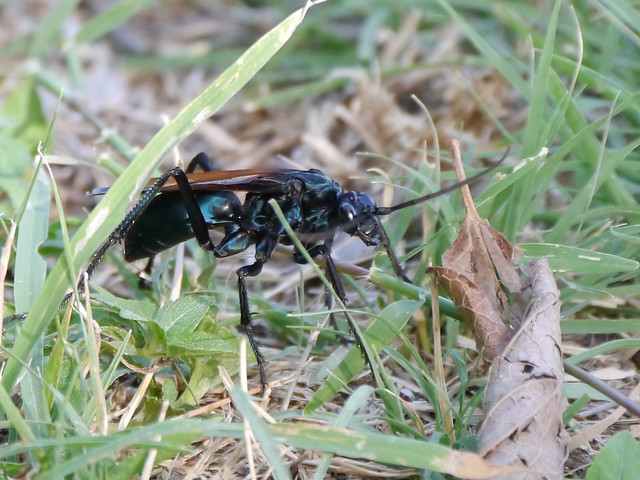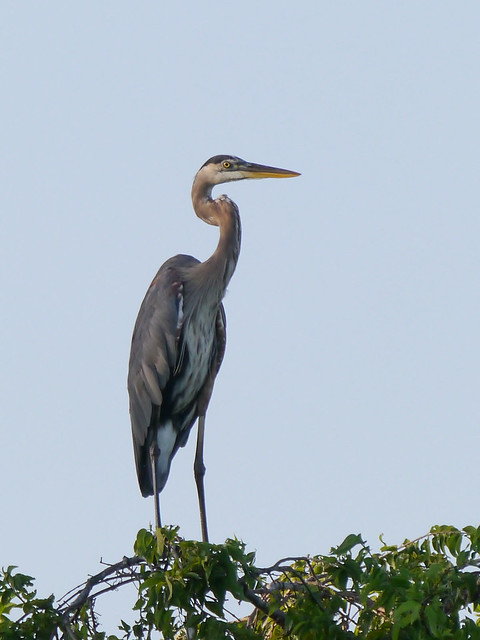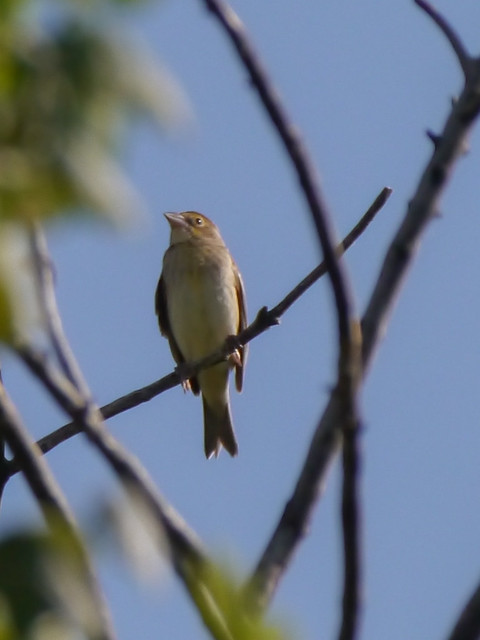We flushed a Great Blue Heron from the creek bed and it landed in some treetops nearby. I took this photo which turned out a little better than I expected:
This time of year a few fall migrants are already starting to head south and we observed just a few. Near the heron we heard at least one Orchard Oriole but never got a good look at it. By the last dam we spotted a couple mature male Painted Buntings which I think were on their way south. This was the most exciting bird observation of the morning, but it was brief and I wasn't able to photograph them.
The most numerous migrating bird we observed was an estimated 11 Dickcissels. Dickcissels are a grassland bird and a common fall migrant here, but they are easily missed. Their loud distinct flight call is easy to recognize once you've heard it a few times, but seeing the birds is difficult. They often stay hidden in the tall grass or dense tree tops. They are also easily overlooked in groups of House Finches or House Sparrows. At our turnaround point at the downstream creek crossing in the playing fields, we finally got this distant look at a female high in a tree:
An insect was our most exciting observation. We spotted a gigantic wasp (maybe 3 inches long) crawling fast on the sidewalk about 20 feet in front of us. When we got a little closer I saw it was a Tarantula Hawk wasp (genus Pepsis). The metallic blue-black color of the body and the bronze wings are characteristic as well as the large size. These wasps paralyze tarantulas and other large spiders, and drag them back to their burrows where they serve as food for the wasp's larvae. I took many photos, but only this one turned out okay:

What a fun morning! Here is our complete bird list.
And here are a few more photos.



No comments:
Post a Comment